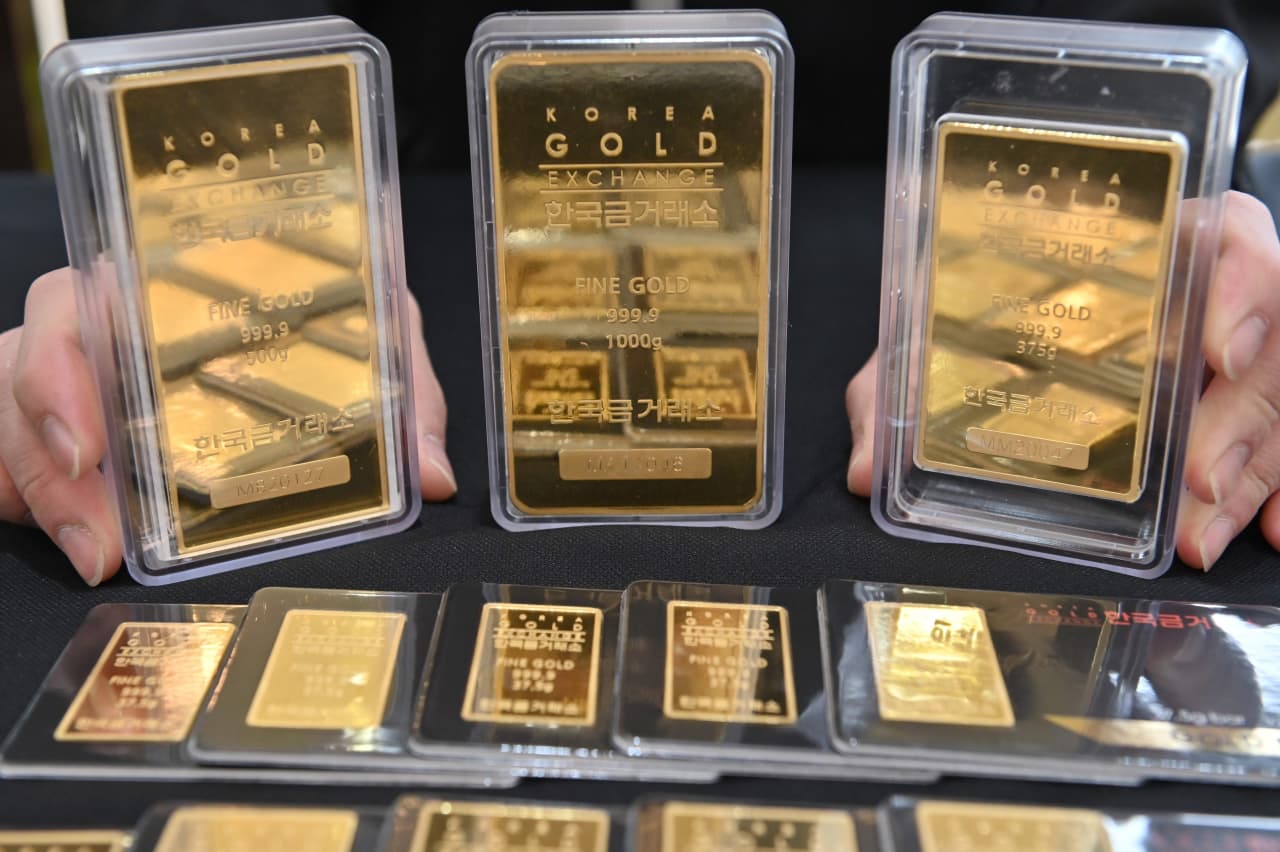Gold scores another record finish. Here’s who isn’t buying.
Gold futures extended their rally on Tuesday and may mark a third consecutive session at a record settlement, but don’t call it a “gold rush” in the West, according to one analyst.
Weak U.S. economic data lifted expectations that the Federal Reserve will cut interest rates later this year, and contributed to declines in the U.S. dollar and Treasury yields, raising safe-haven investment interest in the precious metal.
Gold’s latest run to new record highs, however, has come on a “jump in speculative betting,” Adrian Ash, director of research at BullionVault, told MarketWatch.
There is ”no gold rush among Western investors right now, not in physical bullion and not outside Comex futures and options,” he said.
Gold ETFs continue to “shrink to pre-pandemic size; coin shops are slashing their premiums and buy-back prices to try clearing the flood of customer selling,” said Ash.
There was no sign of that weakness in physical demand on Comex Tuesday. Gold for April delivery
GC00,
GCJ24,
climbed $11.90, or 0.6%, to $2,138.20 an ounce, with front-month prices looking to top Monday’s record-high settlement of $2,126.30.
Record settlements
Prices also reached a fresh record high on Friday, when the Institute for Supply Management (ISM) said its manufacturing index dropped to 47.8 in February, “signifying economic contraction,” said Ryan McIntyre, managing partner at Sprott Inc.
This has helped the gold price as the precious metal “typically does well in times of economic uncertainty” and economic contraction is more likely to “lead to decreases in interest rates, which lessens the opportunity cost for holding gold,” he told MarketWatch.
On Tuesday, the ISM said its service-sector PMI fell more than expected, to 52.6% in February from 53.4% in the prior month.
Following the data, the ICE U.S. Dollar index
DXY
edged lower and the yield on the 10-year Treasury
BX:TMUBMUSD10Y
fell by 6.3 basis points to 4.15% as markets awaited midweek testimony from Federal Reserve Chairman Jerome Powell as well as Friday’s monthly U.S. jobs report.
Precious metals traders are “focusing on the prospects of easier monetary policies this year from the major central banks of the world,” said Jim Wyckoff, senior analyst at Kitco.com. “That would extrapolate into better consumer and commercial demand for metals and also theoretically pressure the U.S. dollar index and lower U.S. Treasury yields.”
Vulnerability
Still, because gold pays no income, these new all-time price highs could be “vulnerable to central banks,” said Ash.
That may be led by the Fed holding interest rates higher for longer to try keeping a lid on inflation, he said.
Read: Fed’s Williams said he’s ‘very focused’ on getting inflation back to target
Even then, a pullback in gold prices “isn’t guaranteed,” said Ash. “Any dip could prove good opportunity to buy into the underlying strength in gold.”
Central-bank demand for the precious metal “remains historically strong, and that’s clearly helping drive up the gold price as sovereign nations favour the precious metal as a safe haven against the worsening geopolitical outlook,” he said.
Physical demand for gold from the key consumer markets of China and India also continues to “run hot,” Ash said.
Meanwhile, bitcoin
BTCUSD,
has reached record highs as well, with prices for the cryptocurrency surpassing $69,000 on Tuesday, leading some traders to question whether bitcoin’s rise will start to draw interest away from gold.
But Martin Leinweber, digital assets product strategist at MarketVector Indexes, said we are not at the phase yet that people sell their gold to buy bitcoin.
Read: Why the launch of bitcoin ETFs threatens the market for gold
Leinweber said he doesn’t think the two can substitute each other, as investors still see bitcoin as a risky asset. It could just be a coincidence that bitcoin ETFs have seen inflows while gold ETFs have seen outflows this year, he said.
ETF outflows
McIntyre, who is also senior portfolio manager at Sprott Asset Management, said he expects gold ETFs to continue to experience outflows this year.
Gold-backed exchange-traded funds in North America saw outflows of 36.2 metric tons this year, as of the week ended Feb. 23, according to data from the World Gold Council. That compares with outflows of 17.1 metric tons in Europe and inflows of 3.1 metric tons in Asia.
“Individuals and institutions seem to be content holding ‘risk assets’,” McIntyre said. “This could, however, change quickly given the dynamic financial and economic landscape.”
For now, central banks also continue to be “strong purchasers of gold as they continue to diversify reserves and prepare for a new range of economic and geopolitical tensions,” he said.
In the short term, in order for gold prices to move even higher, McIntyre said there would need to be some new data “highlighting a decelerating economy, lower inflation, increasing geopolitical tension, or some negative equity price action.”
Frances Yue contributed to this story.
Source link


:max_bytes(150000):strip_icc()/GettyImages-2149425278-10b7e09c3986402ab8fa5ae540068c9d.jpg?w=390&resize=390,220&ssl=1)
:max_bytes(150000):strip_icc()/INV_StrategicPetroleumReserve_GettyImages-1434804700-930b2f63ac494dccb1223603d993391a.jpg?w=390&resize=390,220&ssl=1)
